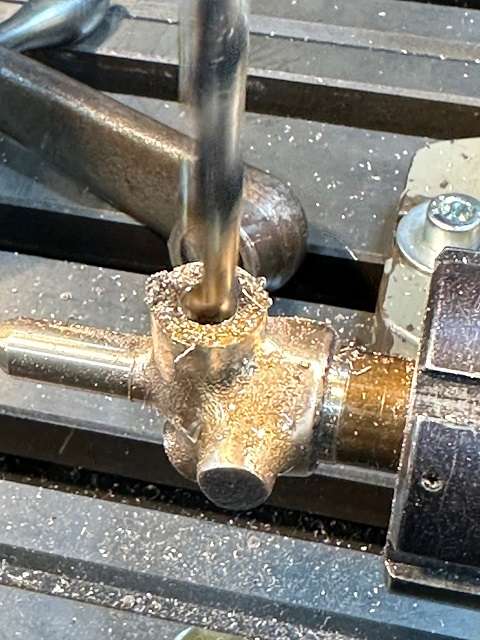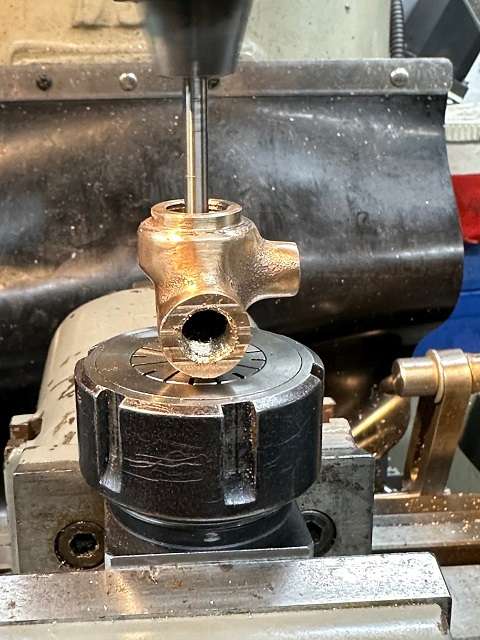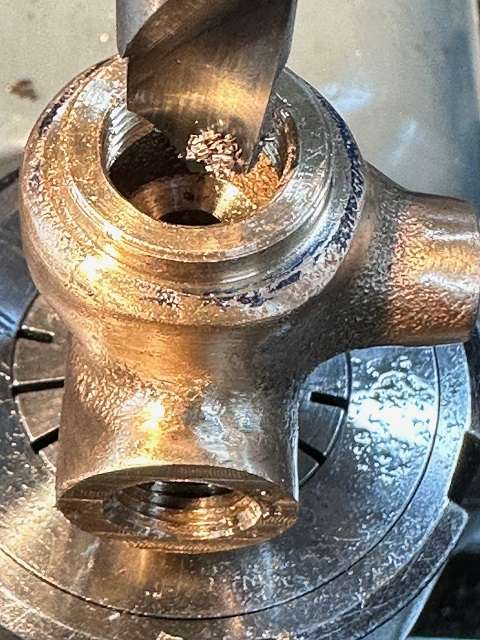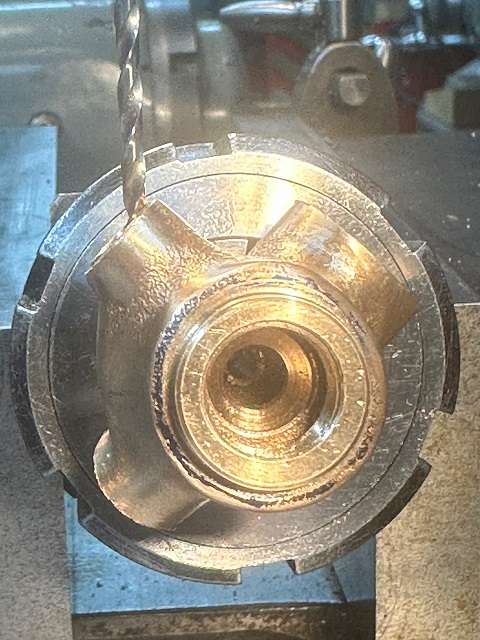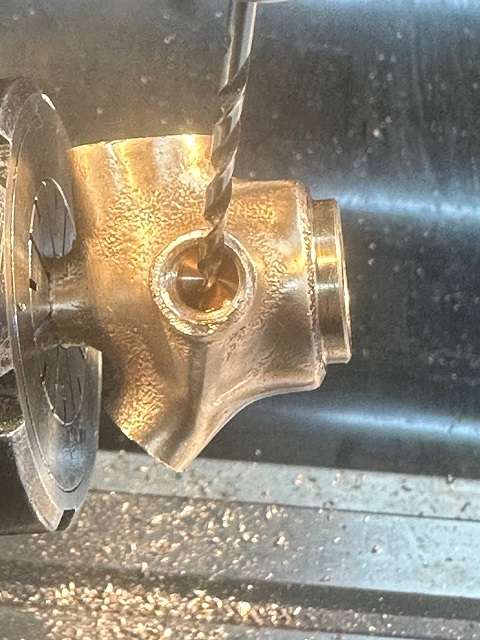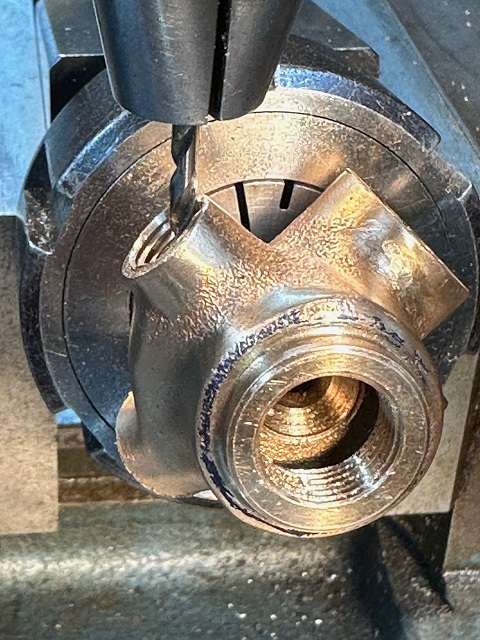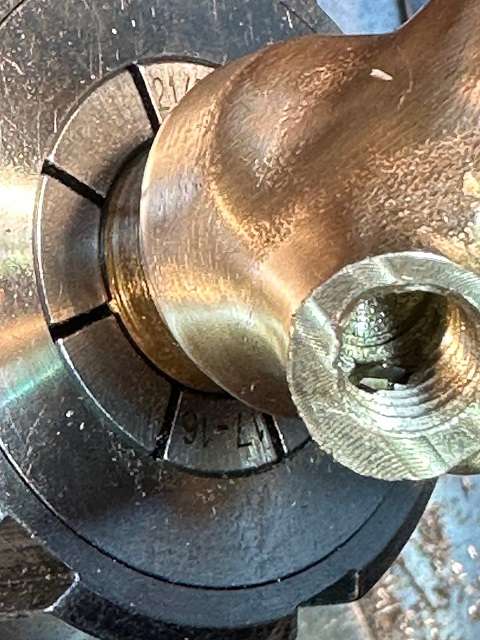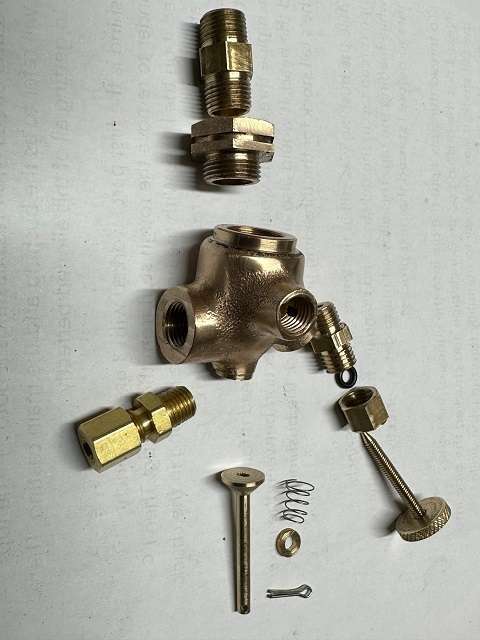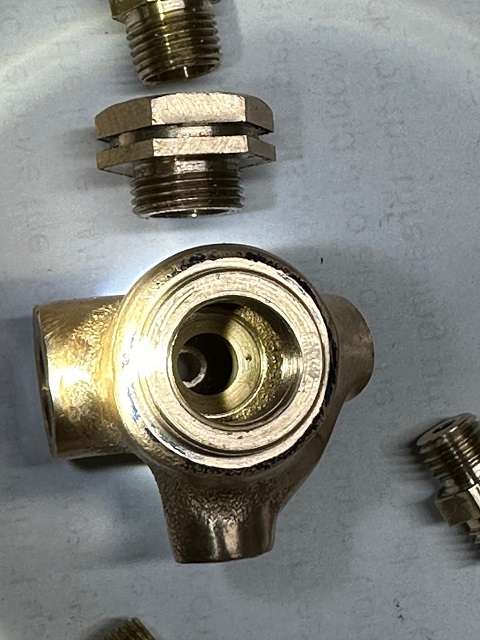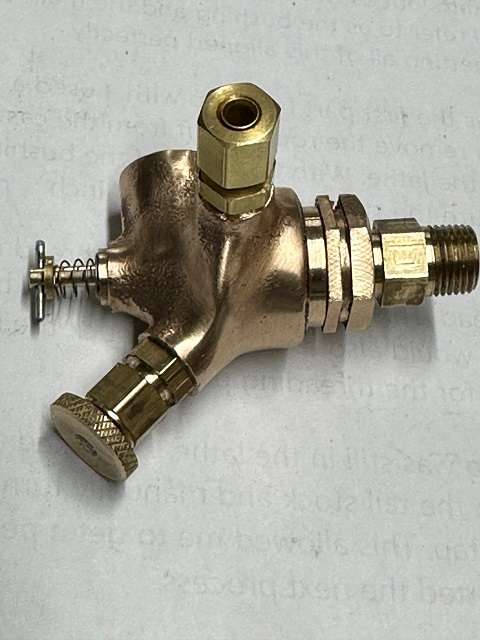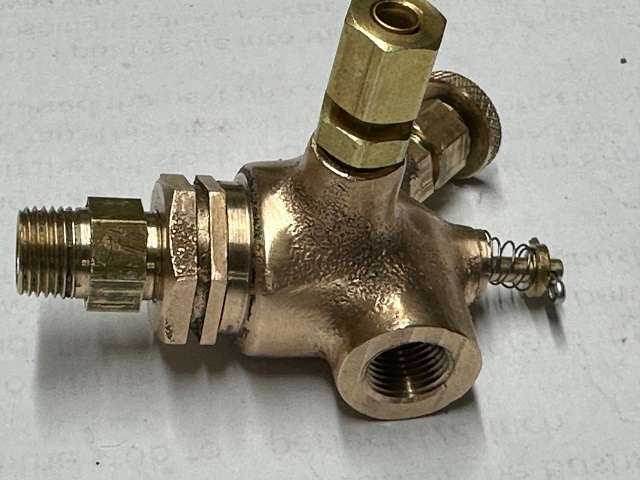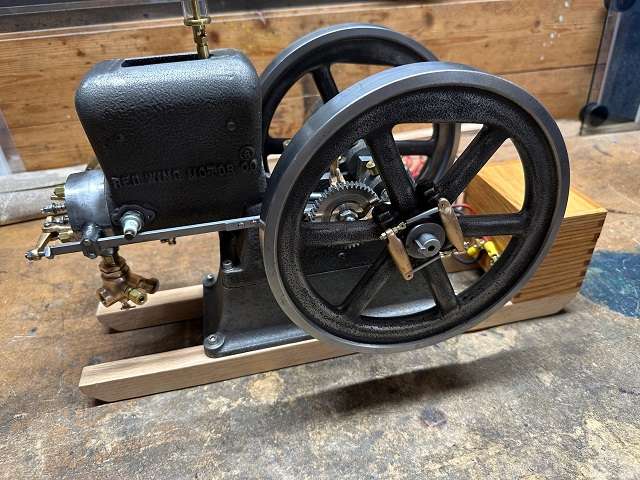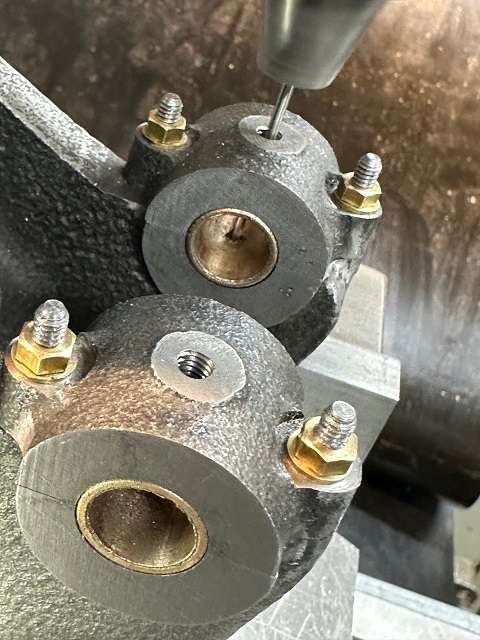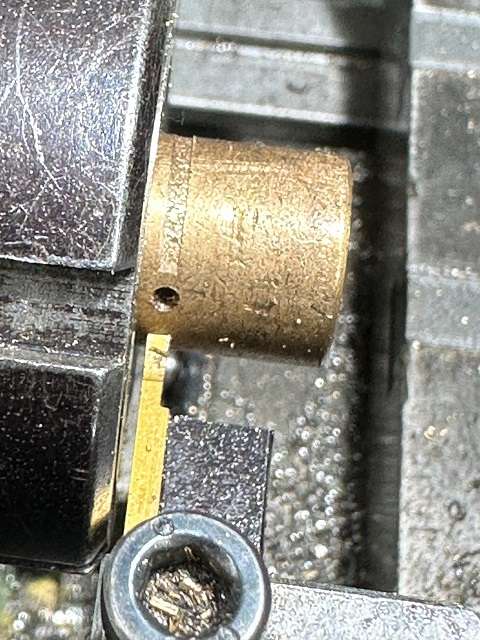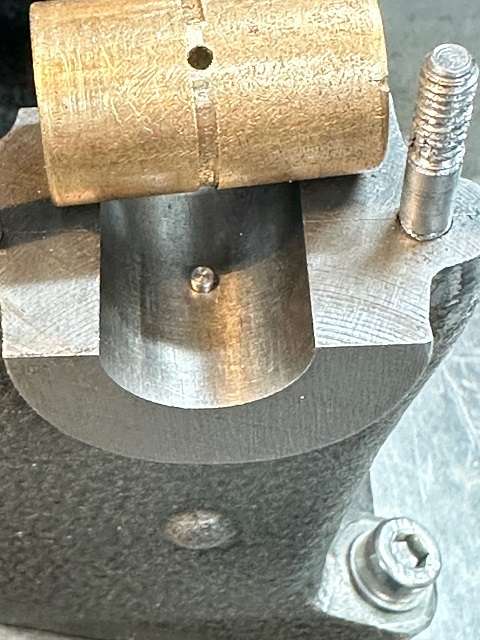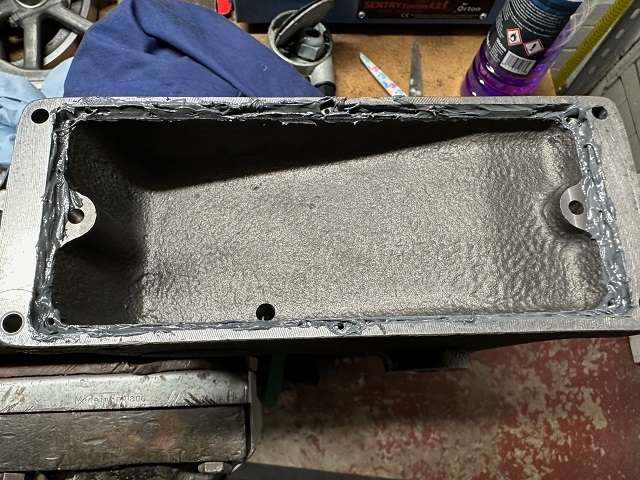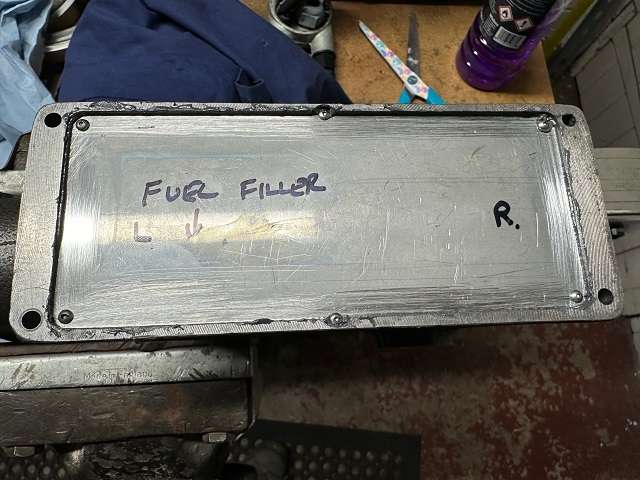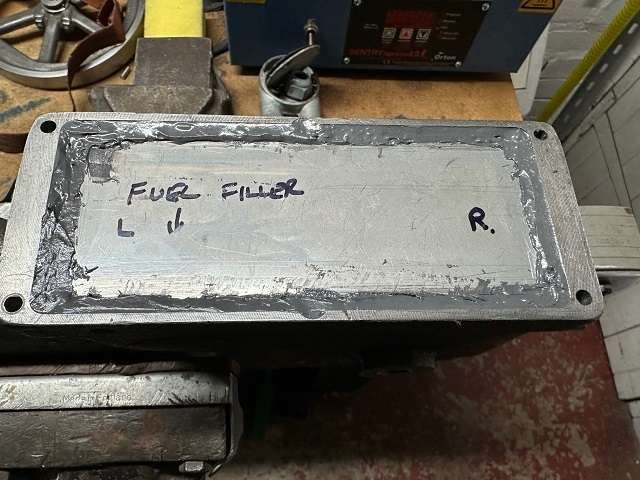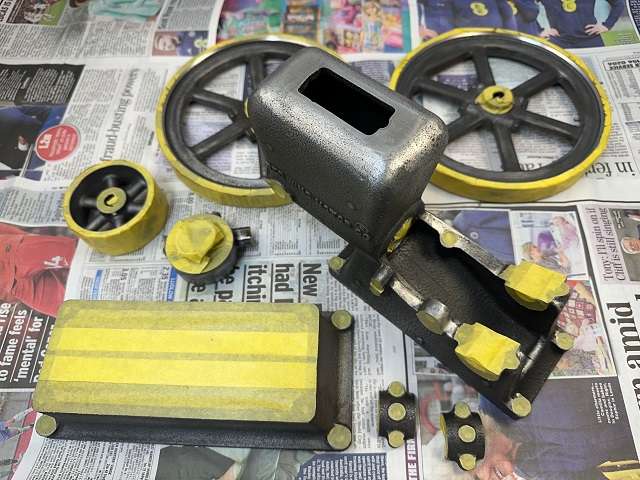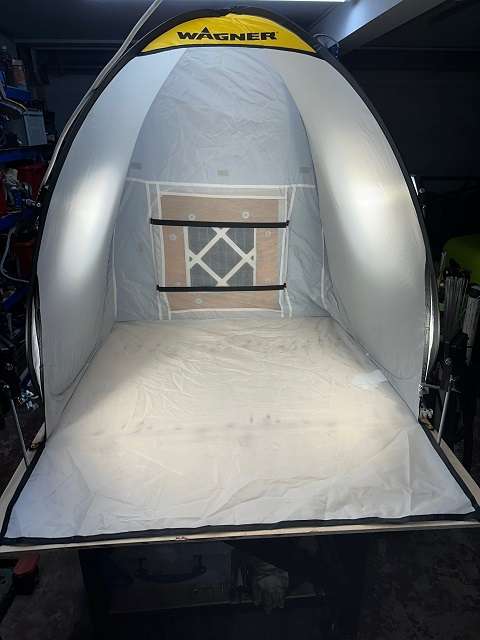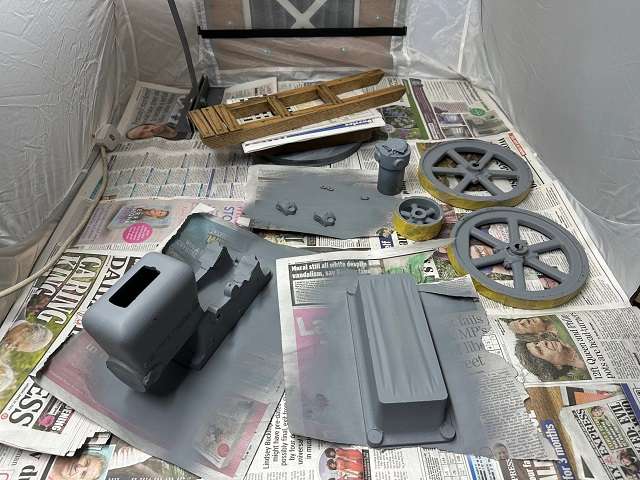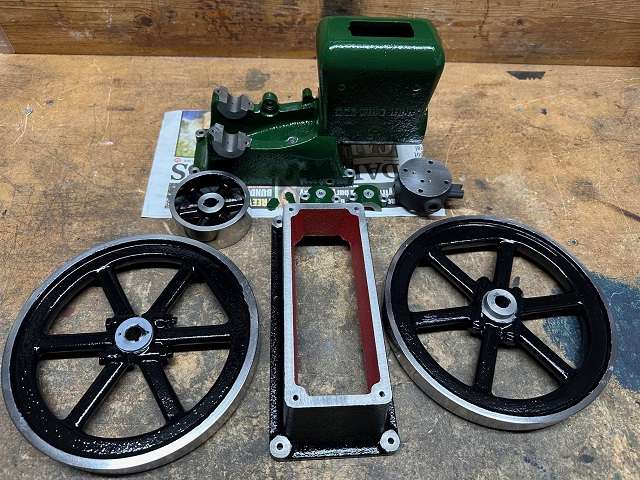I test fitted the fuel needle valve and it all felt good.
The vice was now rotated over to put the Air Intake Boss uppermost. This was faced off 0.656″ from the of the casting, hole centre location checked, 0.8227″, from end face of the casting and then drilled 8.5mm and tapped 1/8″ x 27 NPT. I had already made the inlet pipe so checked fit of the thread.

The collet block now turned through 90 degrees to put the Fuel Inlet Boss uppermost. Boss faced off 0.750″ from centre line. Centred on the boss using 7/16″ drill rod, this should be 0.5″ from end face of casting. Boss now drilled 6.3mm diameter for 0.310″ depth. This depth is critical so as not to break through into the holes in the cored area of the casting. Hole then tapped 1/16″ x 27 NPT and fit of fuel connector checked.
Casting now switched to smaller collet and held by the chucking spigot and the register at the top centered using co-axial dial indicator. Casting now drilled 3.1mm down through the centre and well into the chucking spigot. This hole then reamed to 1/8″

I now needed to cut the valve seat. This needed to have 45 degree face and be 0.447″ diameter. I went through all my countersinks and they were either too small or too bog to fit through the 1/2″ threaded top bore. I hunted through all my end mills and champher cutters but nothing suitable. Finally I found a brand new 10mm carbide spot drill. The cutting end was reduced compared to the shank, but the shank would just go down the bore.
Because the seat was deep down a hole I could not easily (even at all) see progress. In the end I wound the knee up until I could hear a cut being taken and then zeroised the knee DRO. Would knee down and checked cut, would it back up, took 10 thou cut, zeroised the DRO and wound the knee down again. Each time I checked to see where the fuel jet hole was.

I continued like that until I had the fuel hole in the center of the seat and the seat to the maximum diameter of the cutter I was using. The hole can be seen in the picture above. In fact I went a bit too deep, about 6 thou, so used an end mill to remove the slight lip. A bit Heath Robinson but it worked.
The next fun bit was the hole to link the fuel inlet boss and the needle valve boss. This needs to be 3/32″ diameter and must NOT break into the central area of the casting.. This required some careful lining up. The other issue is drilling into the side of a thread the drill will wander. The pictures show the story easier than describing it. I did use a tiny end mill to give me a flat spot to drill, followed by a long centre drill to put a pilot hole.




In theory I was meant to drill a return hole from the needle valve boss so the two joined up. I did not need to do this as I broke through into the base of the tapped hole. I reset the casting in the collet chuck and cleaned up the broken through area using a small end mill.
I cleaned up both threads using the appropriate taps and then fitted the needle valve and the fuel inlet union and checked that I could blow from one to another with the components fitted. All was okay.
The casting was then remounted on the mandrel, moved to the lathe and the chucking spigot removed. The various bosses then cleaned up with file and a trial assembly done.




Getting there:

Need to make fuel pipe and fit fuel tank base. May well still peg the main bearings.
I have set the timing and I can see the inlet valve being sucked open and making a “sucking type” noise and can feel air being pushed out of exhaust. So looking hopeful.
Hopper.


